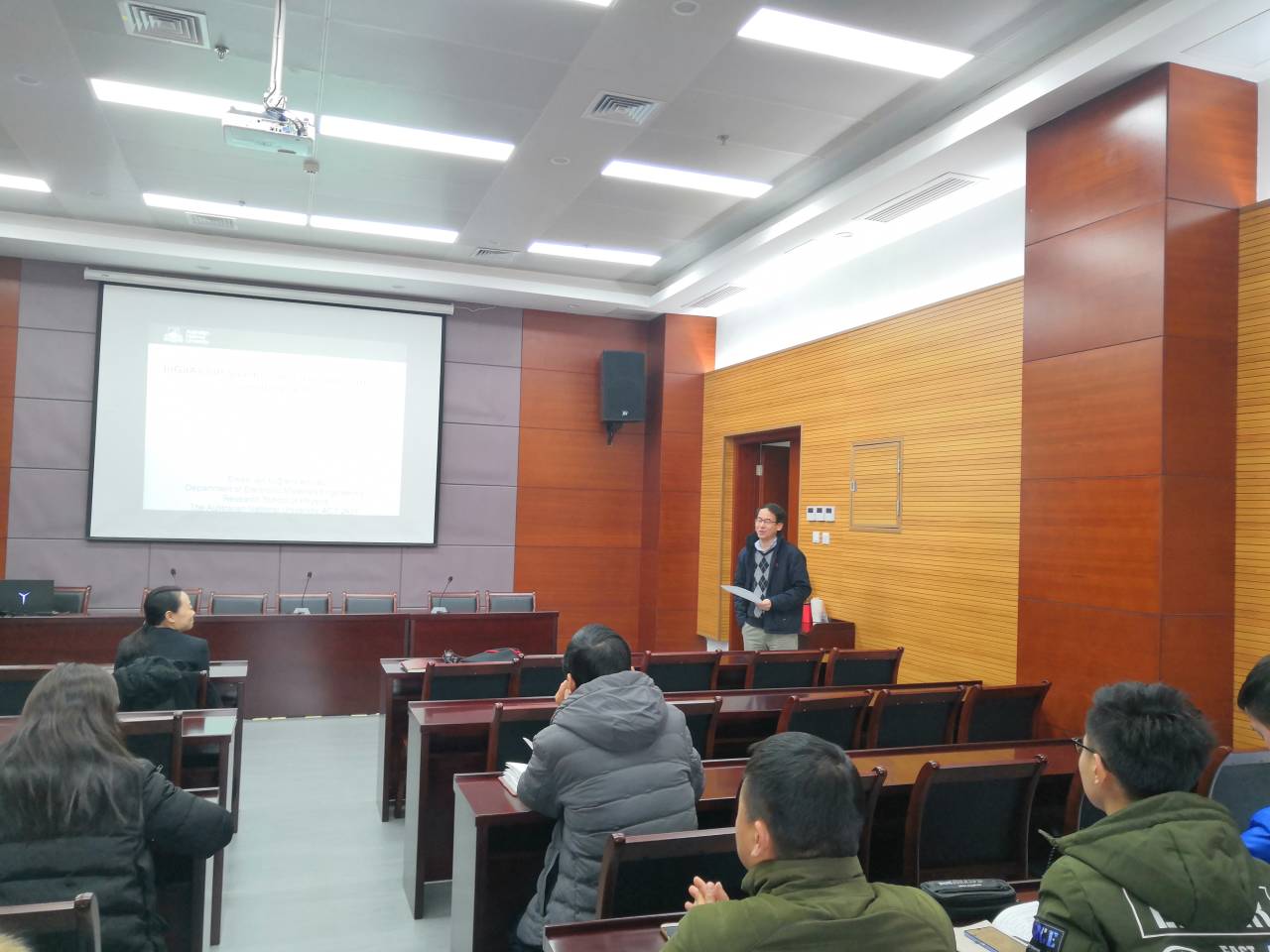2019年12月31日,寒冬腊月,傲梅始放。必赢电子游戏网站有幸请到工作在大洋彼岸的澳大利亚国立大学的傅岚教授,为我院师生做“InGaAs/InP quantum well nanowire surface emitting LEDs ”的学术报告。
报告伊始,主持人为在座师生介绍傅岚教授的研究领域与个人经历。傅岚教授于2001年获得澳大利亚国立大学(ANU)博士学位。目前是ANU物理研究学院的终身教授和副主任。傅岚教授出版了170多种同行评审出版物,编辑了6篇会议论文集/期刊特刊,并拥有两项美国专利。她在国际会议上发表了超过35次邀请/主题演讲,并担任计划委员会/专题讨论会主席/联合主席,参加了30多个国际会议,包括MRS,CLEO,OSA光学与光子学大会,IEEE光子学会议,国际纳米科学会议和纳米技术(ICONN)等。她还是澳大利亚科学院材料科学与工程国家委员会的现任成员,澳大利亚材料研究学会执行委员会秘书。傅岚教授的主要研究兴趣包括基于低维III-V化合物半导体结构(包括量子阱,自组装量子点和纳米线)的光电器件(激光器,LED,光电探测器和太阳能电池)的设计,制造和集成。
本次报告介绍了金属有机化学气相沉积(MOCVD)技术在InGaAs/InP-QW-NW阵列SAE生长中的应用研究,并对其几何特性进行了深入的研究。III-V复合半导体纳米线由于其纳米尺度的尺寸、良好的光学性能和应变松弛特性,使得其能够在晶格不匹配的衬底上实现单片生长,因此作为集成光子学的纳米光源受到了广泛的关注。主要讨论了金属有机化学气相沉积(MOCVD)技术在InGaAs/InP量子阱纳米线阵列上的选择性外延生长,并通过深入研究其几何相关器件特性,展示了单纳米线和阵列纳米线LED。内容充实同时幽默风趣激起了广大师生的兴趣,获得在座师生的高度赞扬。
在现场提问环节,与会的各位教授、老师对报告内容产生浓厚的兴趣,提出了许多与各自领域相关的学术问题,与傅岚教授交换了各自的意见与建议。该报告内容充实,研究新颖,逻辑严谨,理论扎实,在座师生受益匪浅。非常感谢傅岚教授的学术汇报,再会。
报告人简介:
Professor Lan Fu received her PhD degree from the Australia National University (ANU) in 2001. Lan Fu is currently a tenured Professor and Associated Director (HDR) at the Research School of Physics, ANU. Lan Fu has published over 170 peer-review publications (110 journal papers and 2 book chapters), edited 6 conference proceedings/journal special issues, and held two US patents. She has delivered over 35 invited/keynote presentations at international conferences and served as Program Committee/Symposium Chair/Co-Chair for more than 30 international conferences, including MRS, CLEO, OSA Optics & Photonics Congress, IEEE Photonics Conference, International Conference on Nanoscience and Nanotechnology (ICONN) etc. Lan Fu was the recipient of the IEEE Photonic Society Graduate Student Fellowship (2000), Australian Research Council (ARC) Postdoctoral Fellowship (2002), ARF/QEII Fellowship (2005) and Future Fellowship (2012). She is a senior member of IEEE, IEEE/Photonics and EDS societies. She is also the current member of the Australian Academy of Science National Committee on Materials Science and Engineering, Secretary of the Executive Committee of Australian Materials Research Society (AMRS), and ARC College of Experts. Lan Fu’s main research interests include design, fabrication and integration of optoelectronic devices (lasers, LEDs, photodetectors and solar cells) based on low-dimensional III-V compound semiconductor structures including quantum wells, self-assembled quantum dots and nanowires.
报告简介:
III-V compound semiconductor nanowires (NWs) have drawn much attention as nanoscale light sources for integrated photonics due to their nanoscale size, good optical properties and strain relaxation feature enabling the monolithic growth on lattice mismatched substrates. In particular, NWs grown by selective area epitaxy (SAE) technique have many advantages such as controllability of their size and position, high uniformity in diameter and length, as well as complementary metal-oxide-semiconductor (CMOS) process compatibility, facilitating their integration with other electronic devices. With suitable wavelength ranging from 1.3 to 1.6 μm and lattice match of constituent materials, InGaAs/InP quantum well (QW) has been being widely used for optical communication devices. However there has been limited understanding on the growth of InGaAs/InP QW in nanowire architecture and their application for lasers or LEDs. In this talk, we present the study of the SAE growth of InGaAs/InP QW NW array by metalorganic chemical vapour deposition (MOCVD) technique, and the demonstration of both single and array nanowire LEDs with an in-depth investigation of their geometry related device properties.
III-V compound semiconductor nanowires have drawn much attention as nanoscale light sources for integrated photonics due to their nanoscale size, good optical properties and strain relaxation feature enabling the monolithic growth on lattice mismatched substrates. In this talk, we present the study of the selective area epitaxy growth of InGaAs/InP quantum well nanowire array by metalorganic chemical vapour deposition (MOCVD) technique, and the demonstration of both single and array nanowire LEDs with an in-depth investigation of their geometry related device properties.










